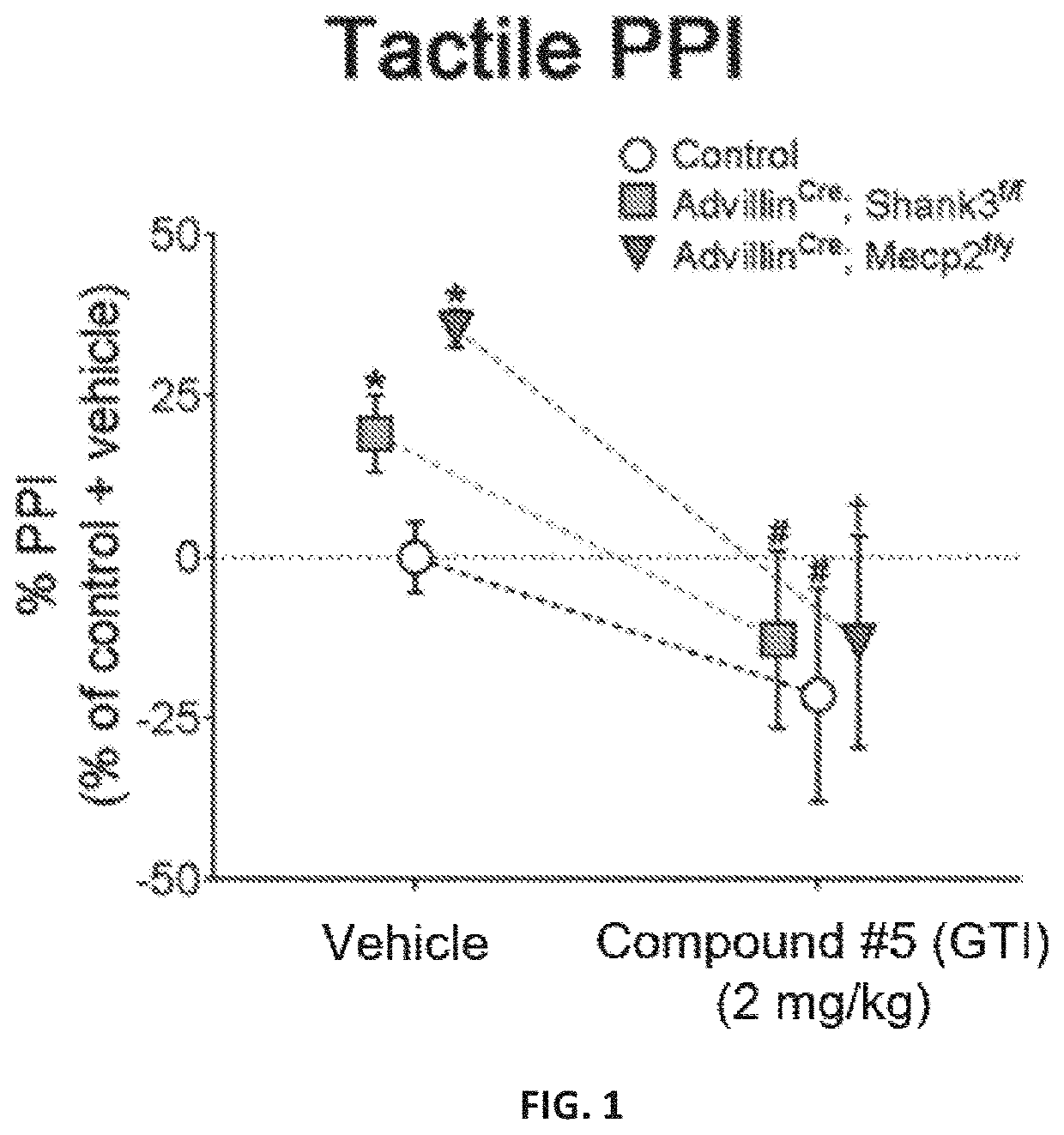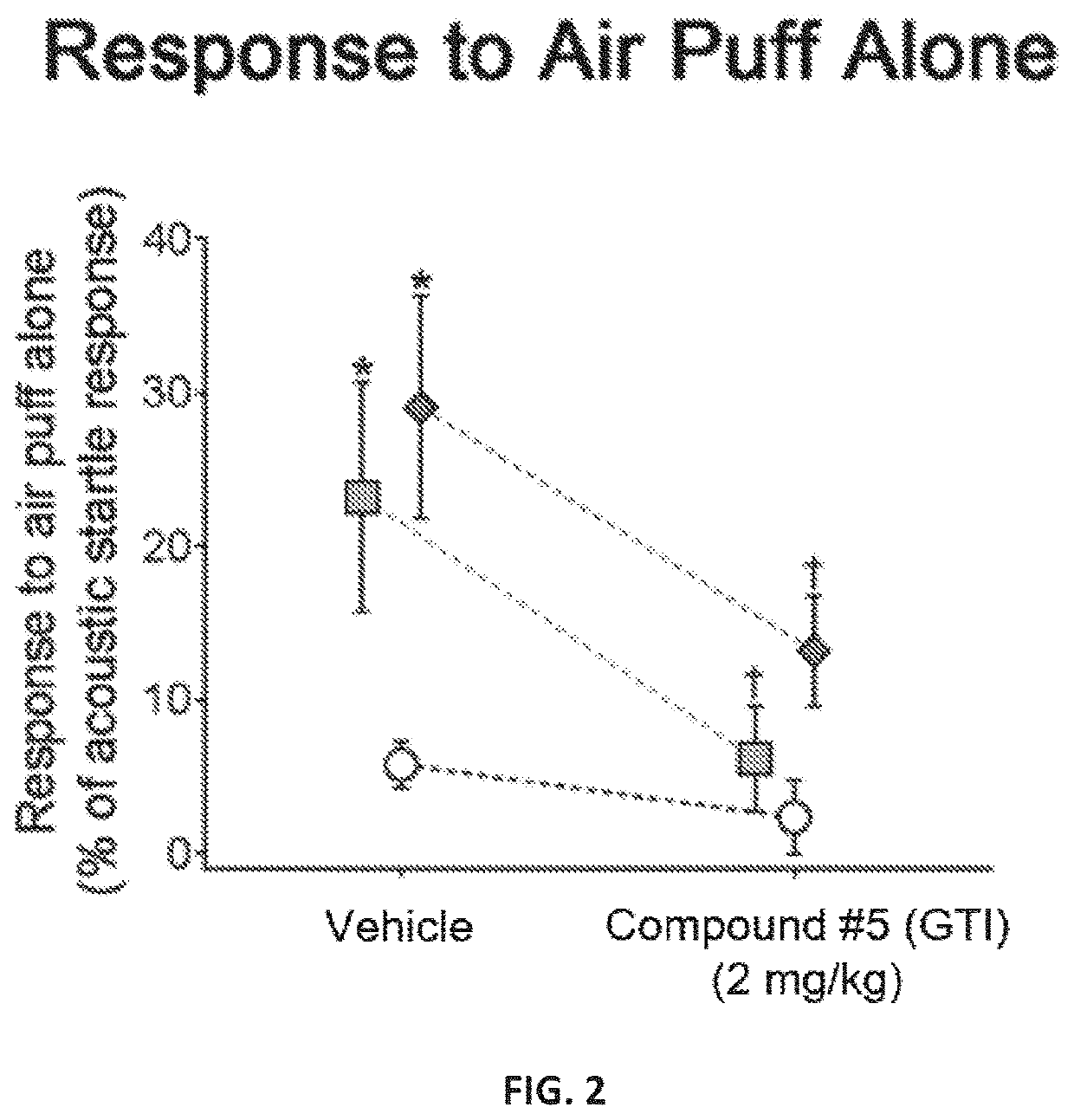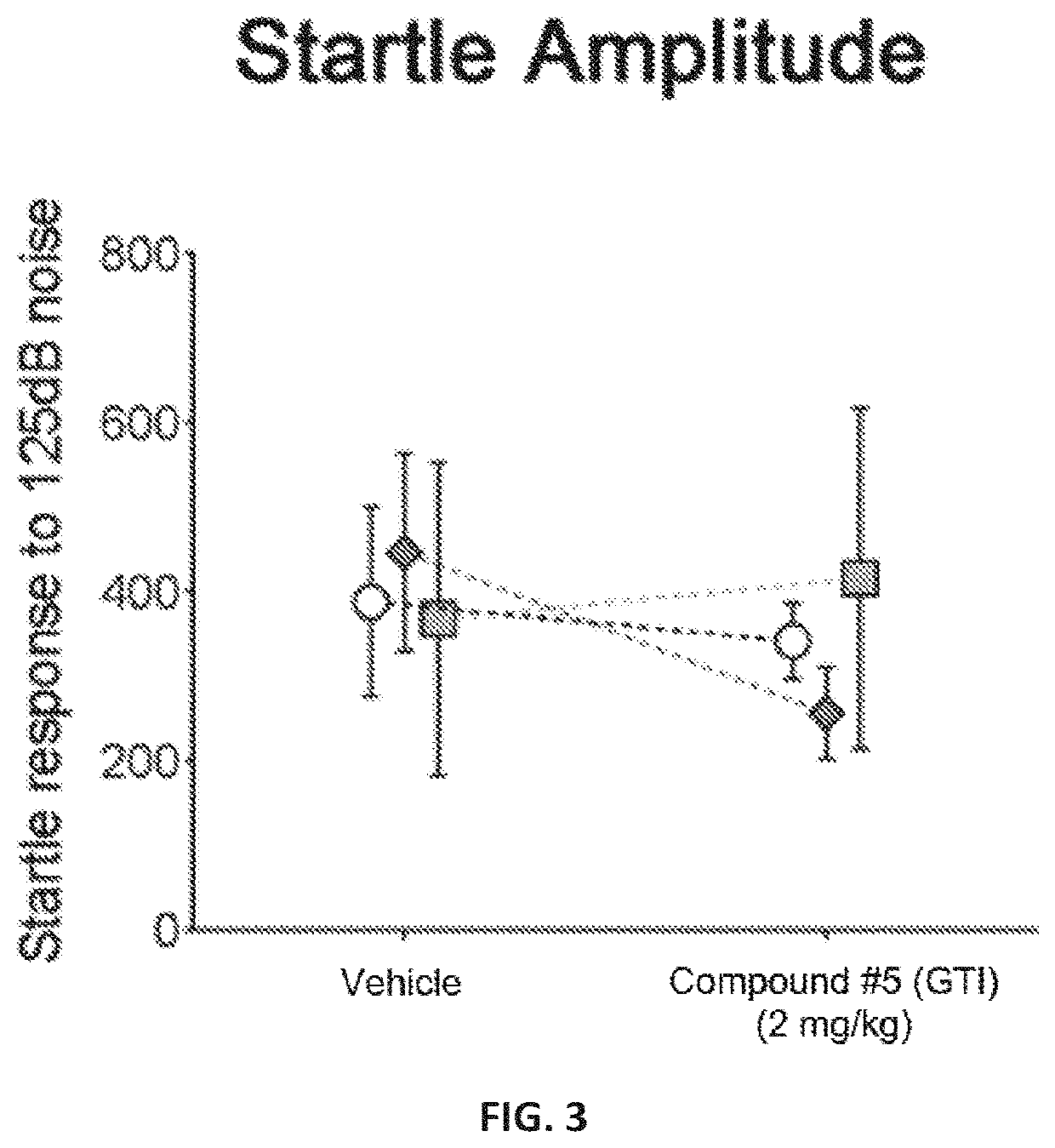Compositions and methods for reducing tactile dysfunction, anxiety, and social impairment
a technology of social impairment and anxiety, applied in the field of compositions and methods for reducing social impairment, anxiety, and tactile dysfunction, can solve the problems of no fda-approved treatment, and achieve the effect of reducing pain
- Summary
- Abstract
- Description
- Claims
- Application Information
AI Technical Summary
Benefits of technology
Problems solved by technology
Method used
Image
Examples
example 1
and Methods
Synthesis of 3-aminocyclohex-1-enecarboxylic acid hydrochloride (5)
[0188]
[0189]1.86 g of 5 was prepared in 6 steps (23.4% overall yield). The final overall synthesis is summarised in Scheme 1.
Synthesis of methyl 3-hydroxycyclohex-1-enecarboxylate (Int 2)
[0190]
[0191]To a solution of Zn(BH4)2 (11.4 g, 120.0 mmol, 3.0 eq.) in THF (150 mL) was added silica gel (22.0 g, 100-200 mesh) in portions. The mixture was stirred at 5° C. for 3 hours. Methyl 3-oxocyclohex-1-enecarboxylate (1, 6.2 g, 40.0 mmol, 1.0 eq.) was added to the mixture dropwise at 5° C., the reaction mixture was stirred at 5° C. for 1 hour. Monitored with TLC, after the reaction was completed, the reaction mixture was poured into ice-cold sat. NaHCO3(150 mL) in portions, then the mixture was extracted with MTBE (200 mL), the combined organic phase was washed with brine (200 mL), dried over Na2SO4, filtered and concentrated to give methyl 3-hydroxycyclohex-1-enecarboxylate (2) as a colorless oil (5.4 g, 87%). 1H ...
example 2
5 Reduced Hairy Skin Hypersensitivity in Mecp2, and Shank3 and Gabrb3 Mutant Mice
[0202]A novel derivative of isoguvacine, termed Compound 5, was synthesized. In order to test its effect on tactile sensation, a tactile prepulse inhibition (PPI) assay was performed in mutant mice. When administered via intraperitoneal injection, Compound 5 significantly reduced hairy skin hypersensitivity in both Mecp2 hemizygous null, Shank3 homozygous, and Gabrb3 heterozygous conditional mutant mice, as measured by the tactile PPI assay and response to air puff stimulus alone (FIGS. 1-2, FIGS. 4-5). Importantly, mice with a complete loss of GABA-A receptors on peripheral somatosensory neurons (AdvillinCre; Gabrb3f / f), do not show a reduction in tactile sensitivity when administered Compound 5, indicating that GABA-A receptors on peripheral sensory neurons are necessary for Compound 5 to improve hairy skin hypersensitivity (FIGS. 4-5).
[0203]FIGS. 1 and 4 show the percent inhibition of an acoustic sta...
example 3
of Isoguvacine and Compound 5 in the Rat Spinal Nerve Ligation (SNL) Pain Rats Model of Neuropathic Pain
[0206]
TABLE 2Test Article(s)Name:IsoguvacineCompound 5Storage Conditions:2-8° C., away from light2-8° C., away from light
TABLE 3VehicleName:SalineSupplier:WuXiPhysical State:ClearStorage Conditions:2-8° C.
TABLE 4Animal UseSpeciesSD RatBody Weight Range~140 gAge (Study started)5-6 weeks oldArrive Date2019 Mar. 12SexMaleSourceSLAC, ShangHai, ChinaAddress of SupplierNO. 1696 Day Rd. Fengxian,Shanghai, P.R. ChinaMethod of IdentificationTail markersNumber of Animals for24AcclimationNumber of Animals for50 ratsDosingJustification for number3 groups, animal numberof Animalsper dose group is 8
TABLE 5Group and Dose ProtocolRoute ofDosingGroupAdministrationDoseVehicleAdminvolumeN1Vehicle—SalineIP5 ml / kg82Isoguvacine5 mpkSalineIP5 ml / kg83Compound 55 mpkSalineIP5 ml / kg8
[0207]Chung surgery were conducted on anesthetized rats. Rats were habituated in the testing environment for 15 minutes befor...
PUM
| Property | Measurement | Unit |
|---|---|---|
| mole fraction | aaaaa | aaaaa |
| mole fraction | aaaaa | aaaaa |
| mole fraction | aaaaa | aaaaa |
Abstract
Description
Claims
Application Information
 Login to View More
Login to View More - R&D
- Intellectual Property
- Life Sciences
- Materials
- Tech Scout
- Unparalleled Data Quality
- Higher Quality Content
- 60% Fewer Hallucinations
Browse by: Latest US Patents, China's latest patents, Technical Efficacy Thesaurus, Application Domain, Technology Topic, Popular Technical Reports.
© 2025 PatSnap. All rights reserved.Legal|Privacy policy|Modern Slavery Act Transparency Statement|Sitemap|About US| Contact US: help@patsnap.com



